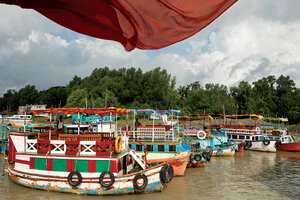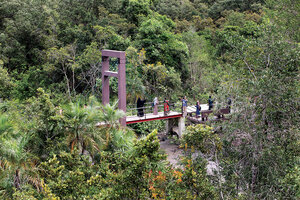The Sundarbans mangroves hold a treasure-trove of nature
We loved every second of our day trip to the world's largest mangrove forest, which straddles Bangladesh and India.

Tourist boats are docked on the Pashur River in Mongla, Bangladesh. Many of them will be booked to the Sundarbans.
Melanie Stetson Freeman/Staff
Mongla, Bangladesh
We thought we were going tiger-watching. We were thrilled.
The Bangladeshi town where staff photographer Melanie Stetson Freeman and I needed to base ourselves – to report an installment of the Monitor’s Climate Generation project – sat at the gateway to the Sundarbans, the world’s largest mangrove forest. To prepare for the excursion, I had read all about this lush expanse in Indian-born writer Amitav Ghosh’s novel “The Hungry Tide.” And I had heard that tours to spot the elusive Bengal tigers living within the protected area are a top attraction in Bangladesh.
We built in some extra time to report on this, not realizing that any attempt to spot these tigers takes days that we didn’t have in our packed schedule (and dollars that we didn’t have in our budget). So our local assistant helped us book a day trip instead to the edge of the forest, which straddles Bangladesh and India.
OK, so it wasn’t a five-night cruise. We still loved every second of it – the breeze on the deck of our color-splashed boat, the rhesus macaques gobbling up bananas at Karamjal Forest Station, our stroll along raised wooden platforms over ancient mangrove roots that help protect the shoreline from storm surges. We even spotted a playful riverine dolphin – also heavily featured in “The Hungry Tide.”
Then it started to pour, so we headed to the lower deck, almost at the water’s surface. As the boat noisily chugged along, we had a perfect view of Bangladesh, whose culture revolves around hundreds of waterways that zigzag across the nation – like so many tiger stripes.



